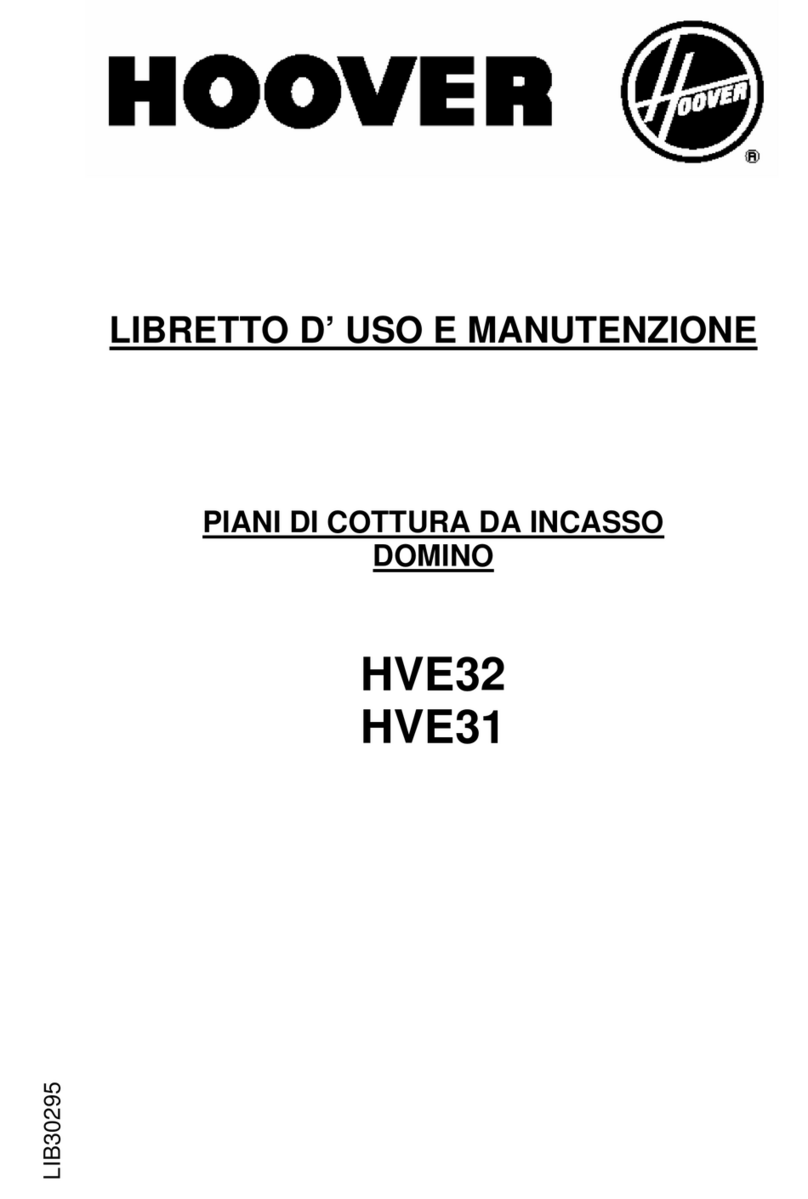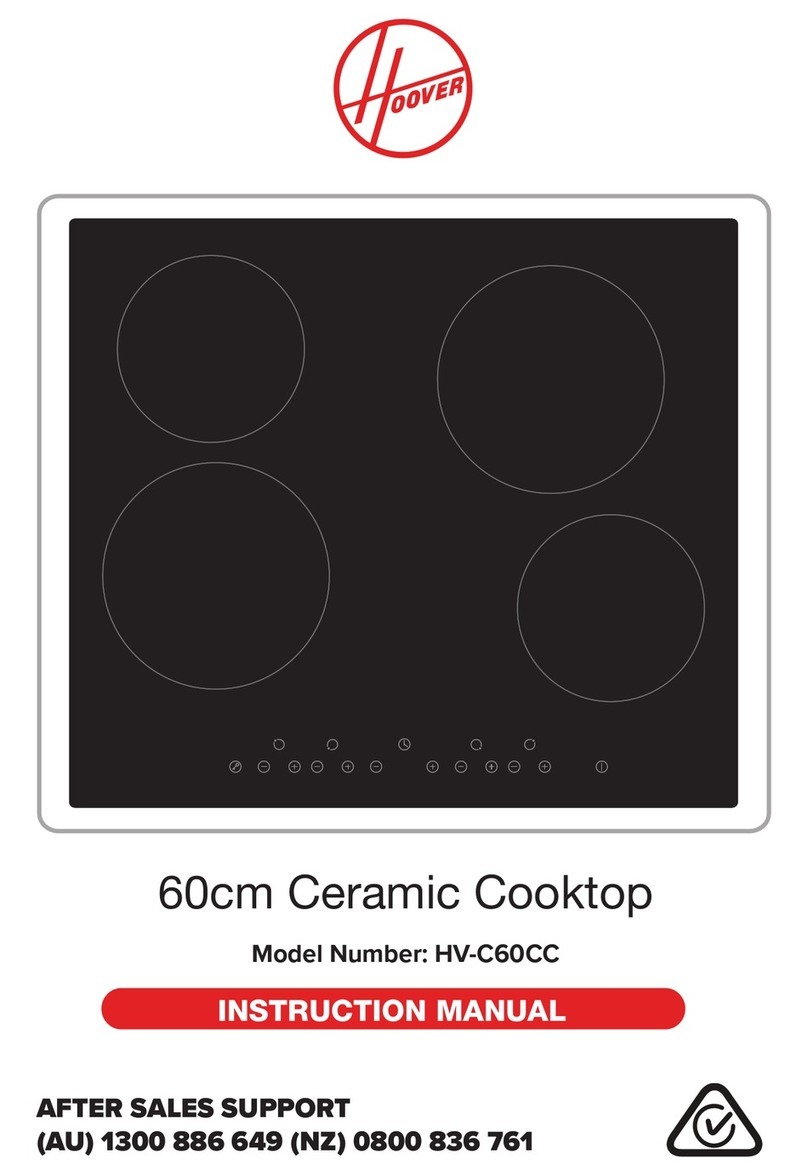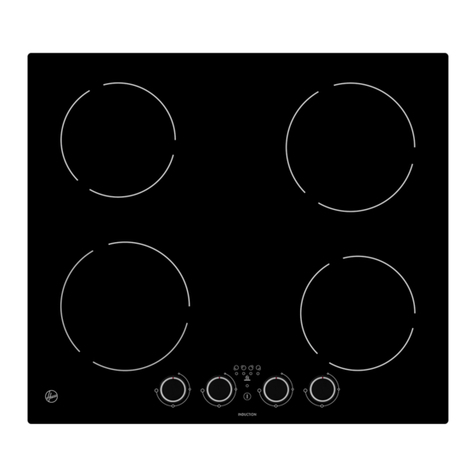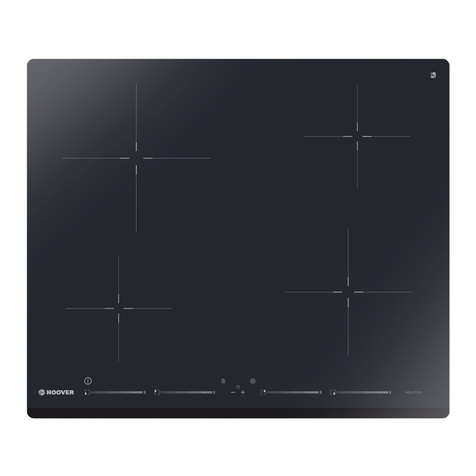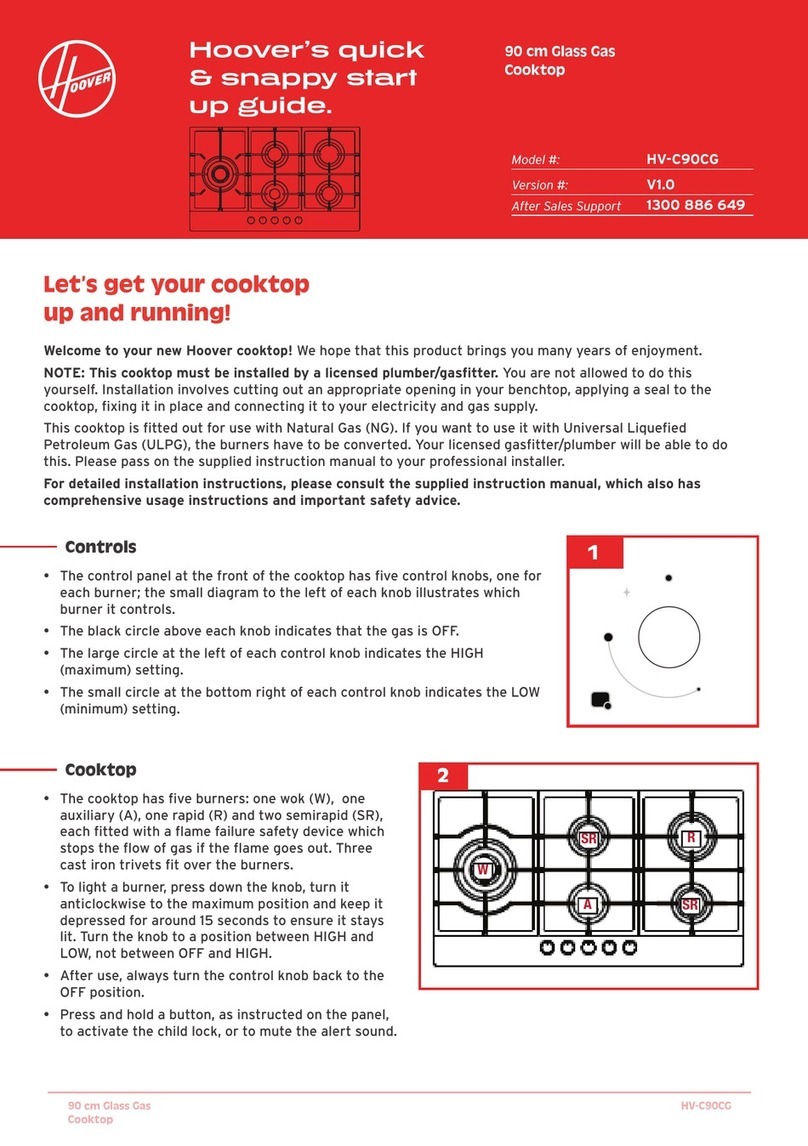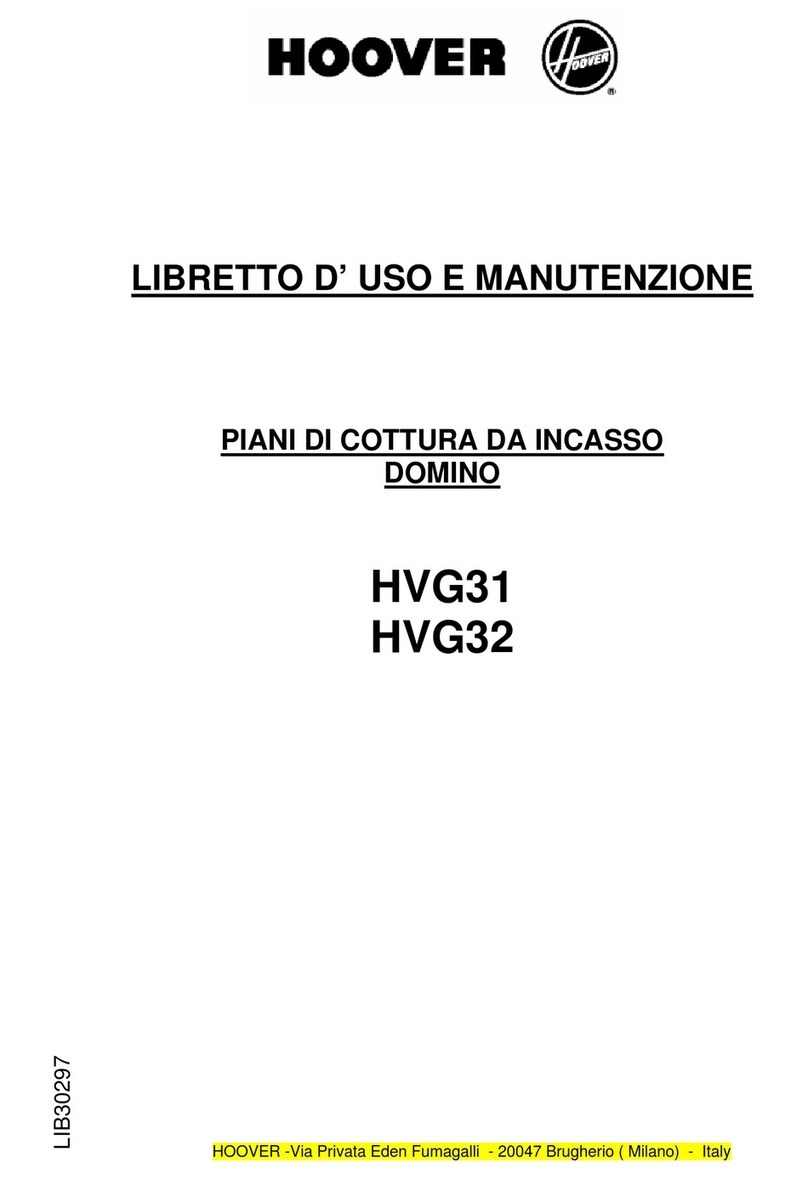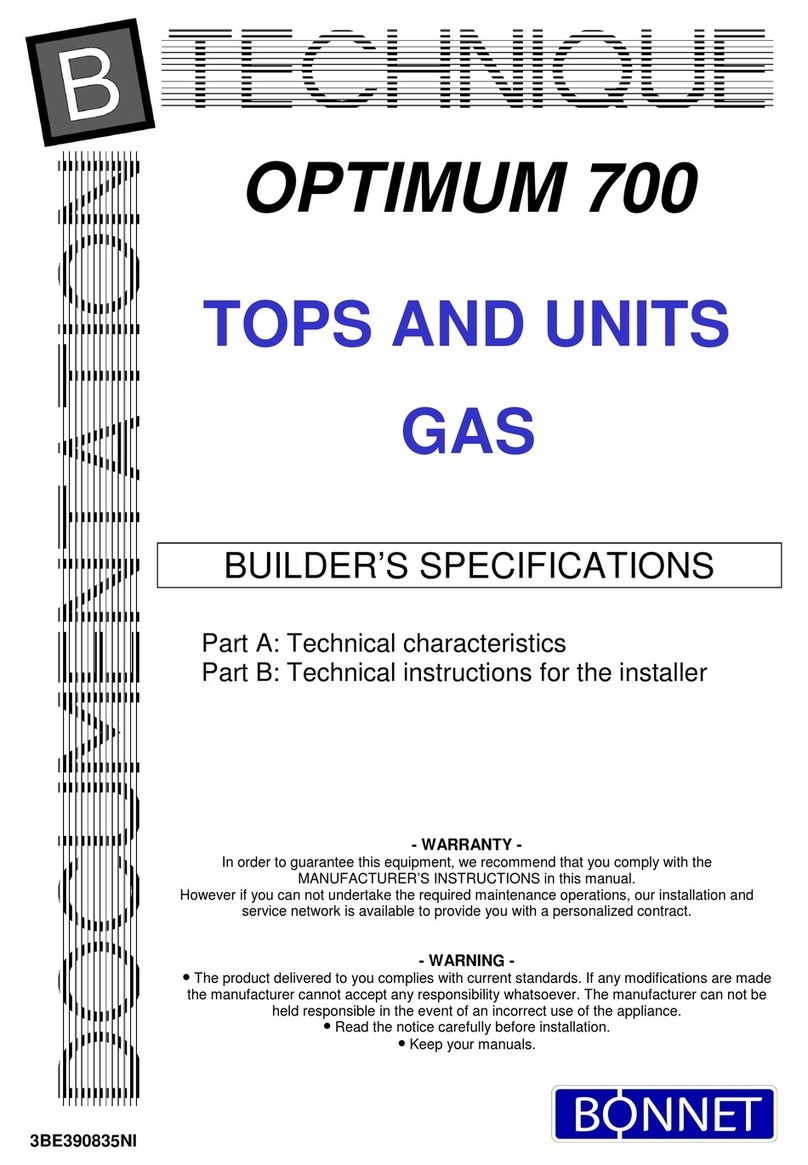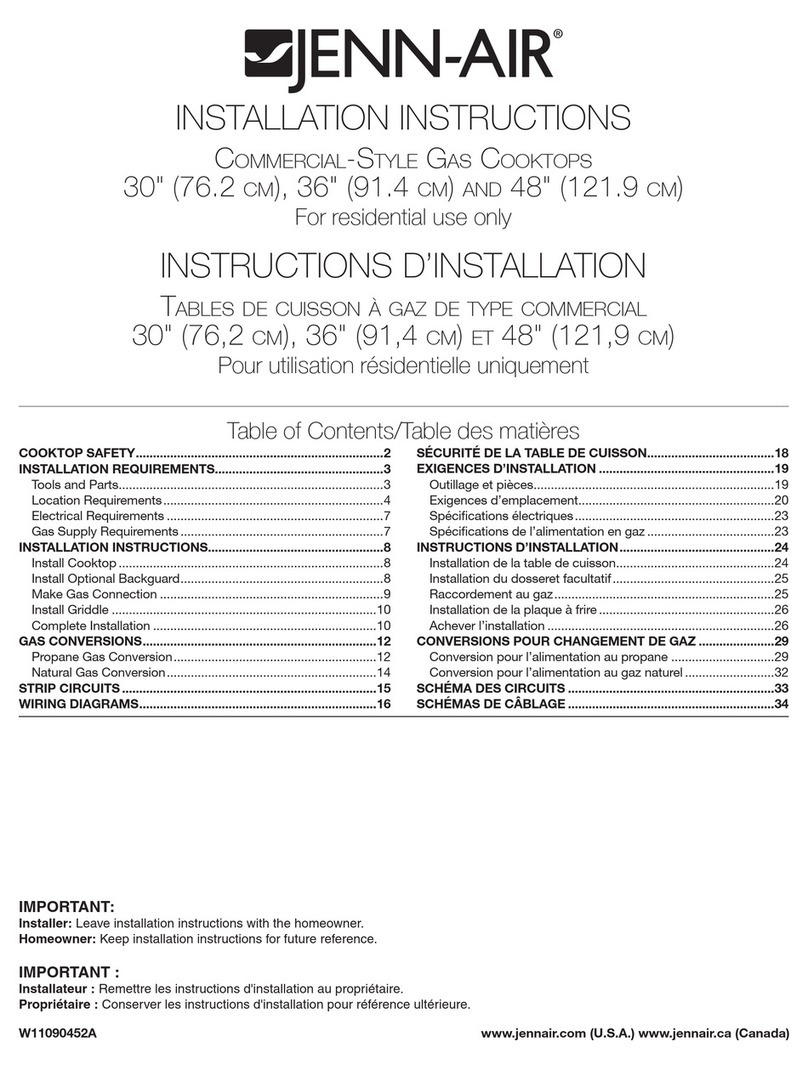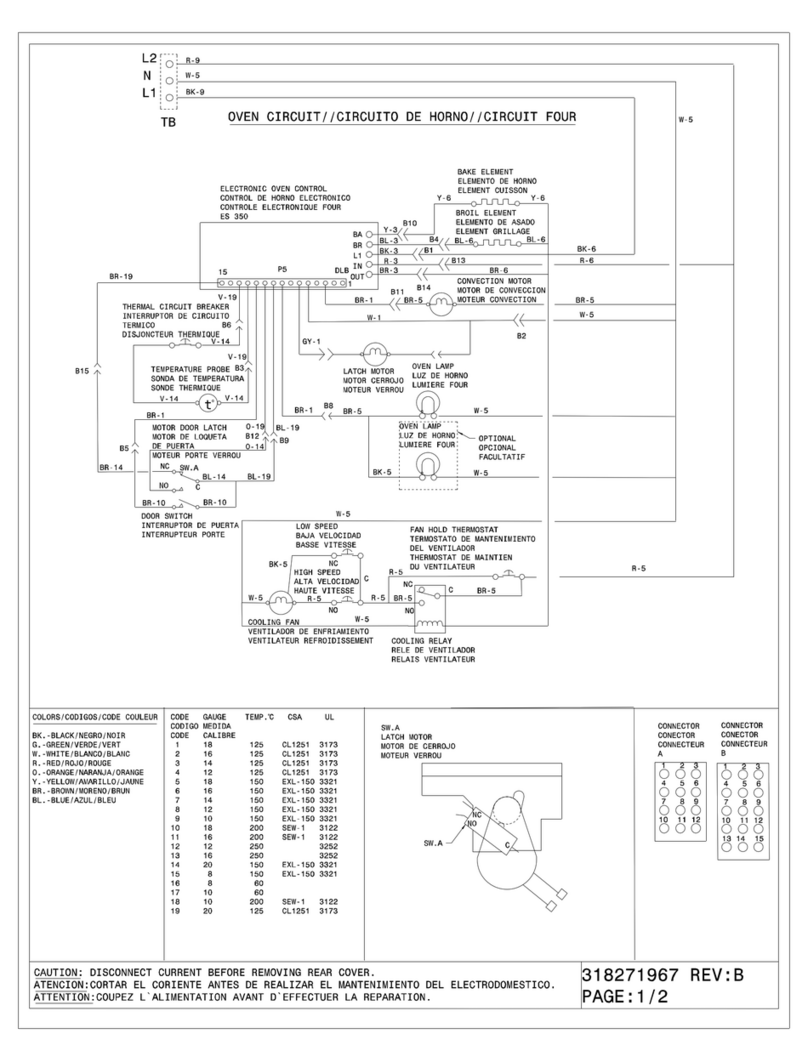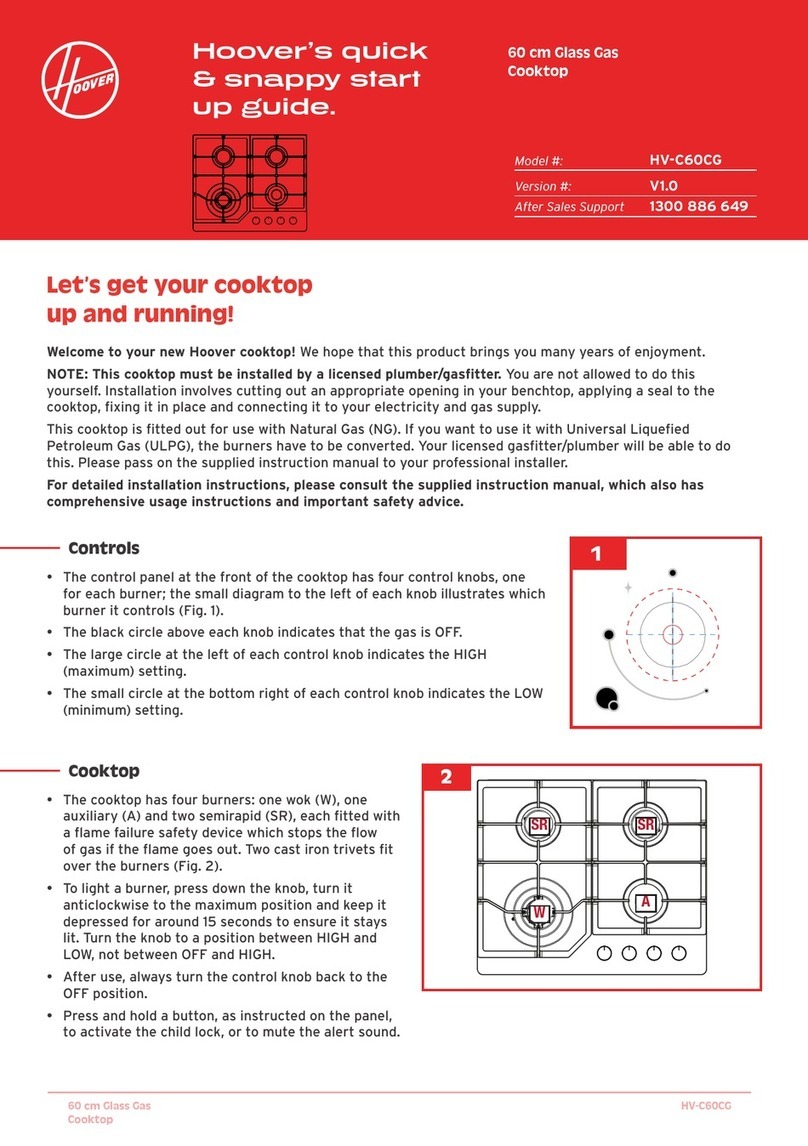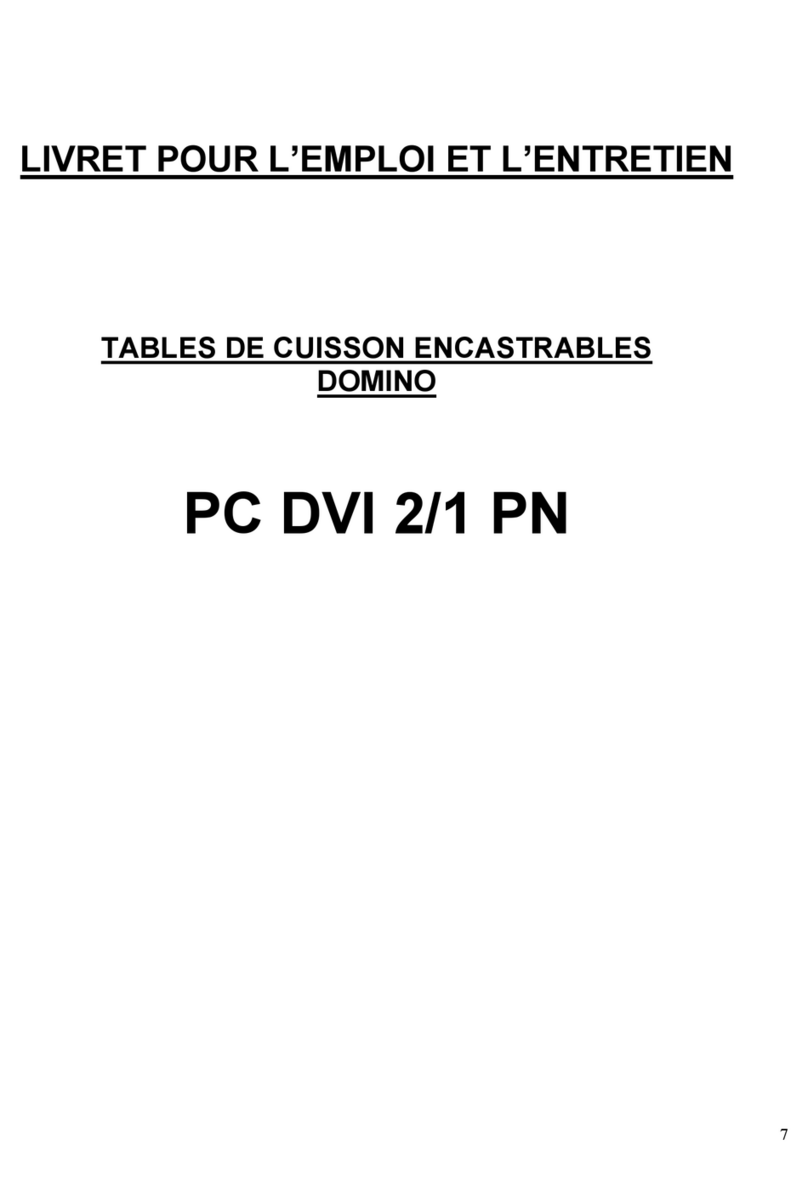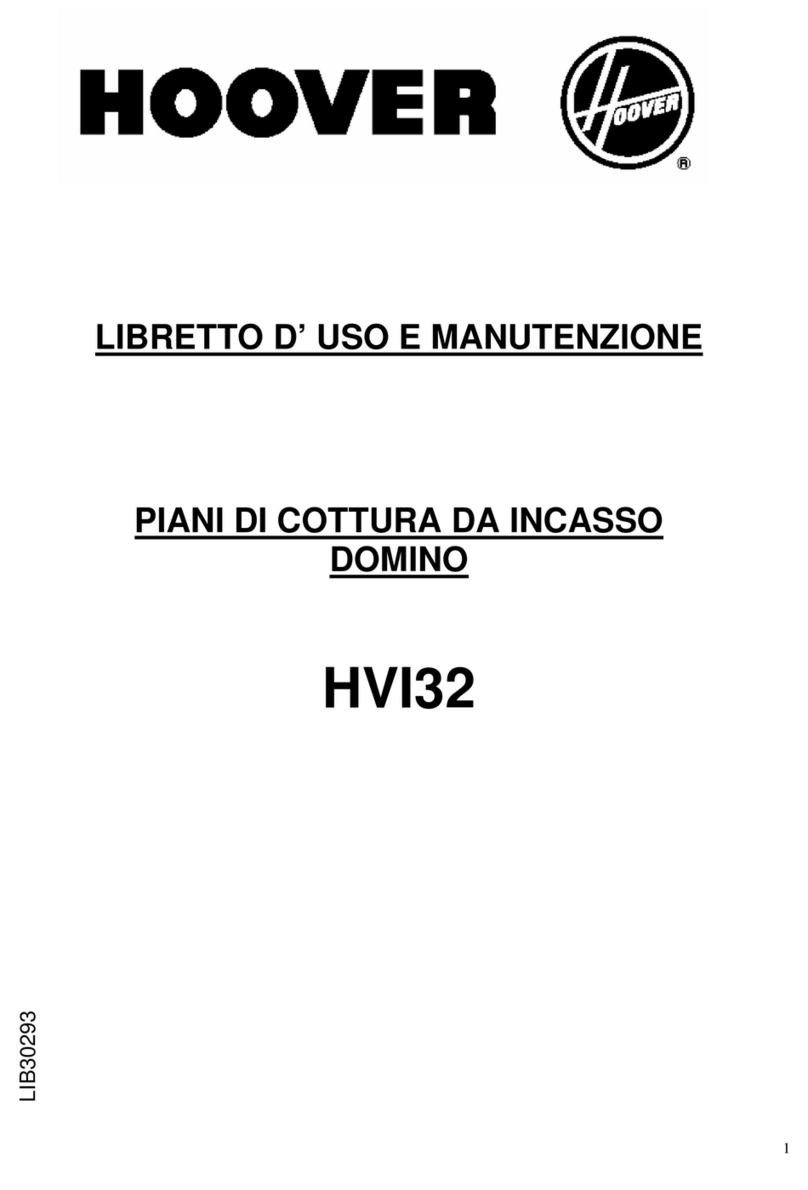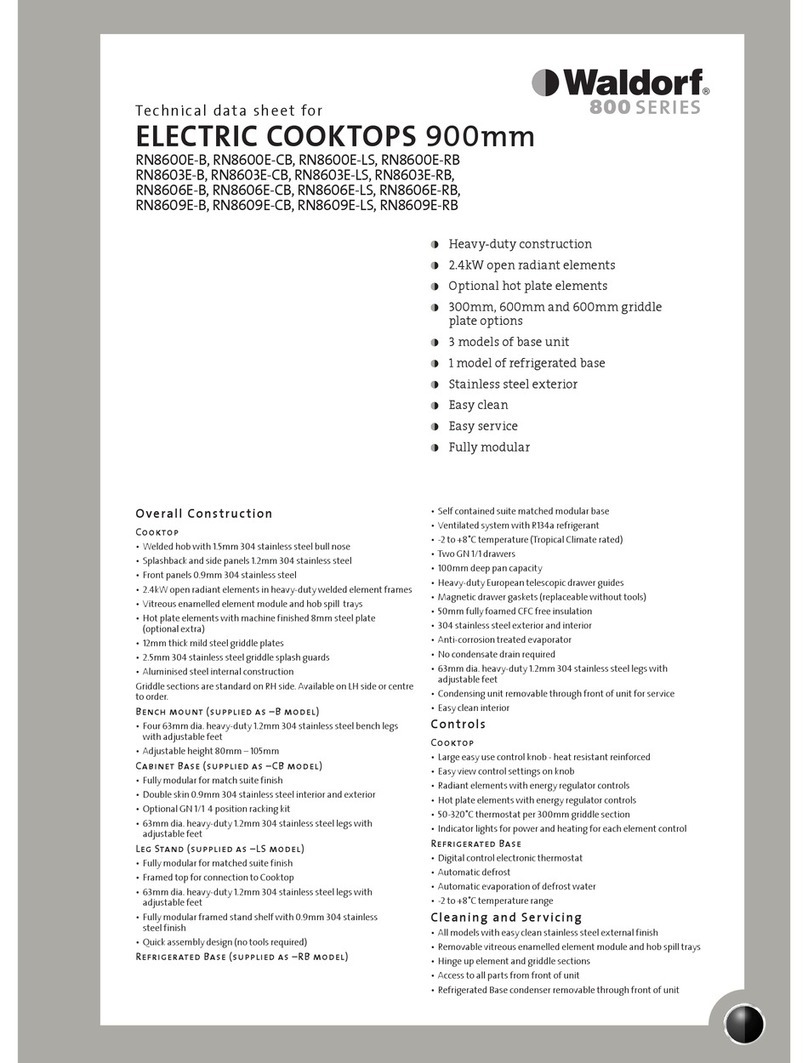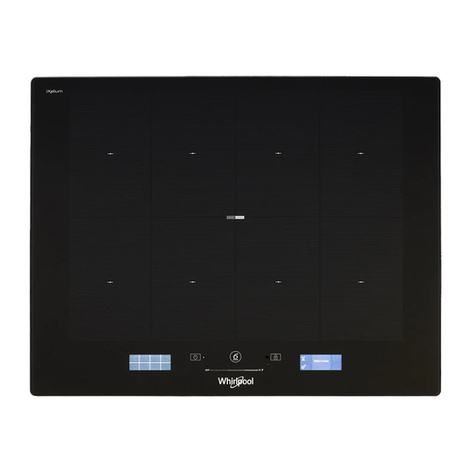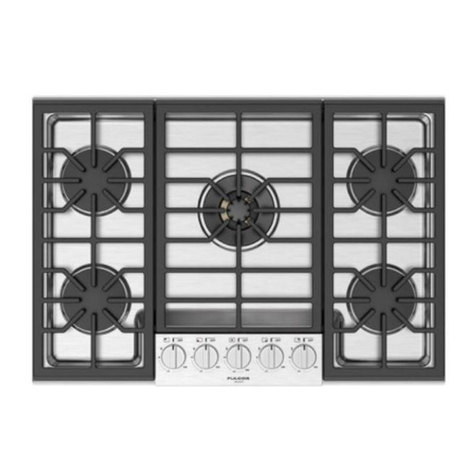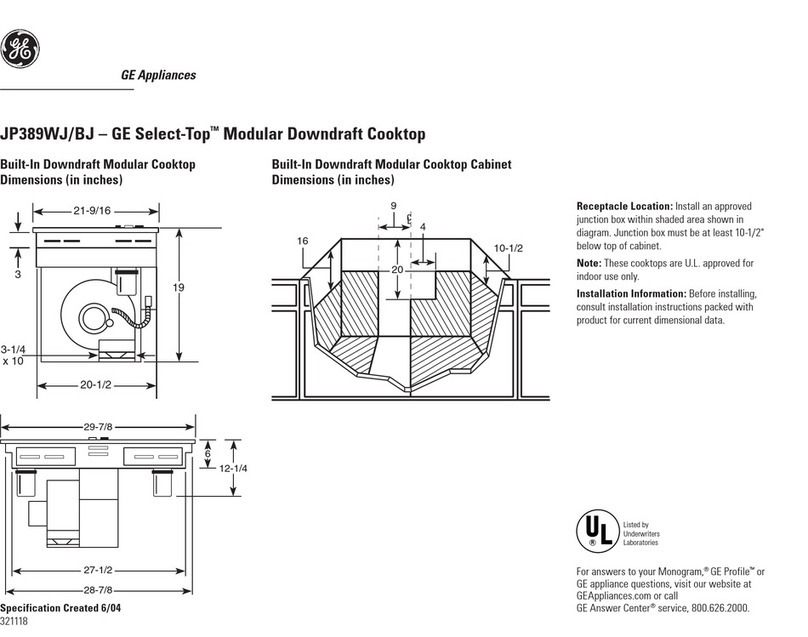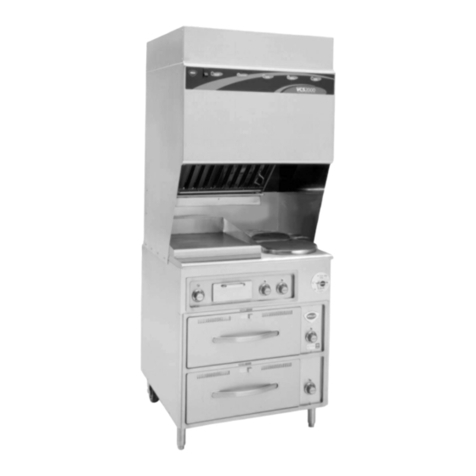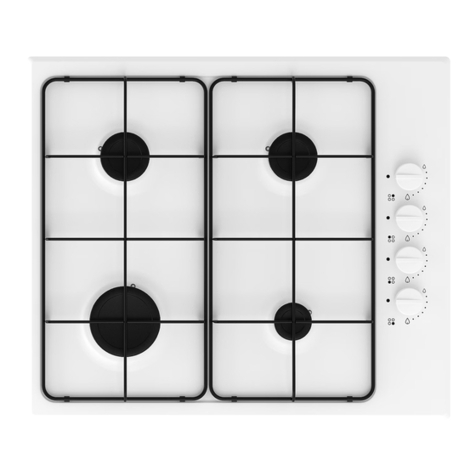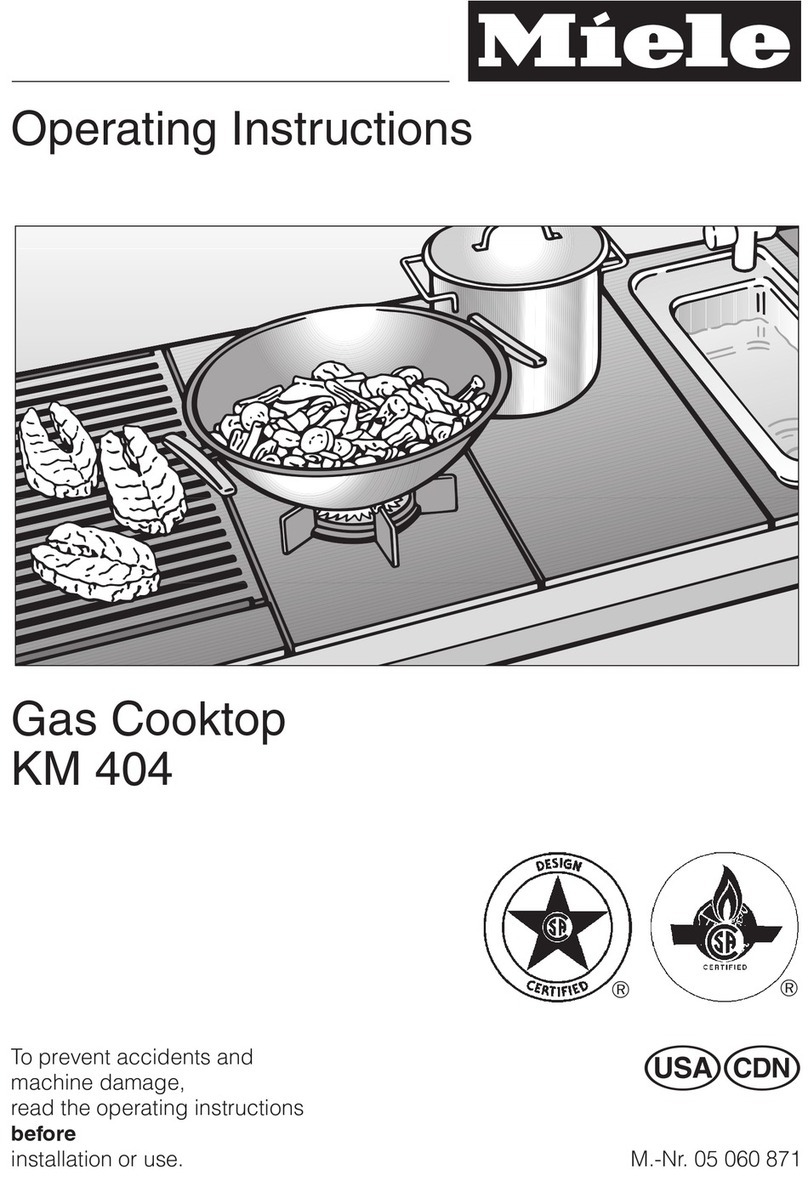
5
After Sales Support
(AU) 1300 886 649 (NZ) 0800 836 761 | tempo.org/support
General Safety Instructions (Cont.)
General usage conditions and restrictions
• Domestic use only: This cooktop is designed for indoor domestic use only;
commercial catering may invalidate the warranty. The cooktop can be built
into a standard kitchen cabinet or housing unit.
• Intended purpose: Only use this cooktop for its intended purpose
(preparing food), in its intended environment and as described in this
manual. Any other use may cause fire, electric shock or injury, and
invalidate the warranty. Do not modify this appliance.
• Ventilation: Heat, steam and moisture will be created during use. Take care
to avoid injury and ensure that the kitchen is adequately ventilated.
• Instructions: Make sure to observe all rules and provisions in this
instruction manual. Do not allow anybody who is not familiar with the
contents of this manual to operate the cooktop. These instructions are
not intended to cover every possible condition and situation. As with any
electrical household appliance, use common sense and caution when
installing, operating and maintaining the cooktop.
• Power cord: Do not allow the power cord to come into contact with areas
on the cooktop that get hot. Check the cord regularly for damage. Do
not use the appliance if the cord, or any other part of the appliance, has
been damaged. If the supply cord is damaged, it must be replaced by the
manufacturer or its service agent or a similarly qualified person in order to
avoid a hazard.
• Usage restriction: This appliance is not intended for use by persons
(including children) with reduced physical, sensory or mental capabilities, or
lack of experience and knowledge, unless they have been given supervision
or instruction concerning the use of the appliance by a person responsible
for their safety.
• CAUTION! Children and pets: Cooking appliances become very hot in
use, therefore ensure children and pets are kept away. If it is necessary
for younger family members to be in the kitchen, ensure that they are kept
under close supervision at all times.Do not allow children to operate or play
with any part of the appliance. It is designed to be operated by adults.
• Health issues: If you have any mechanical parts in your body (e.g. an
artificial heart), consult a doctor before using the appliance.
• WARNING! Fire risk: Never leave the cooktop unattended during use,
as this is a fire risk. Oils and fats in pots and pans may catch fire due to
overheating. Do not cover the cooktop or place combustible materials on or
near the surface even when the cooktop is not in use.
